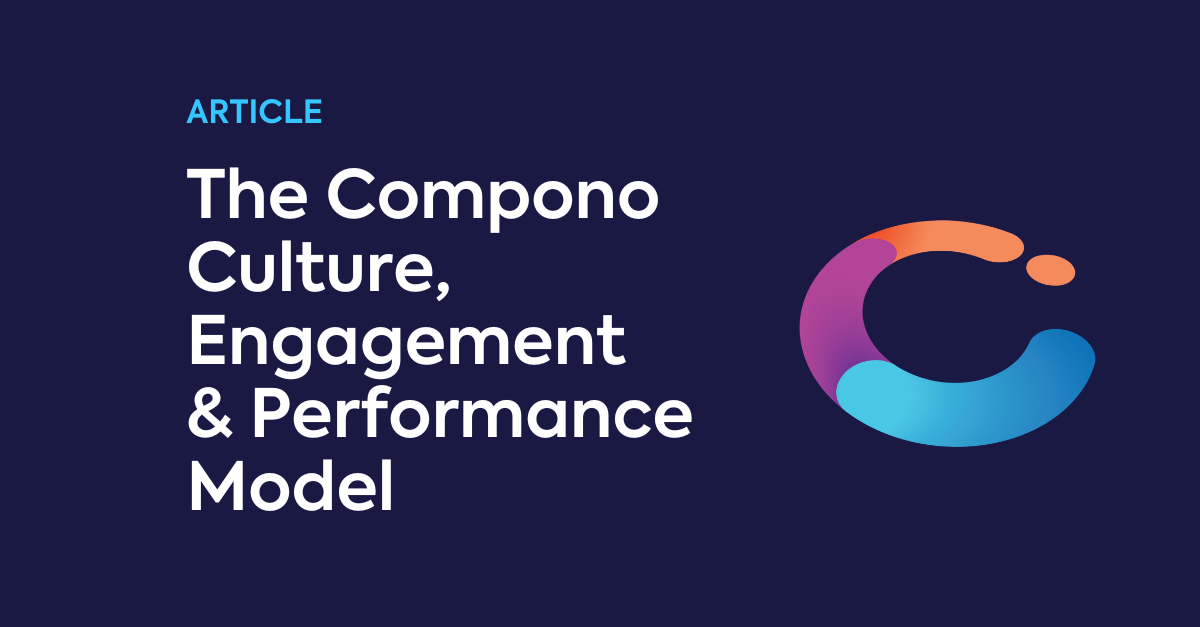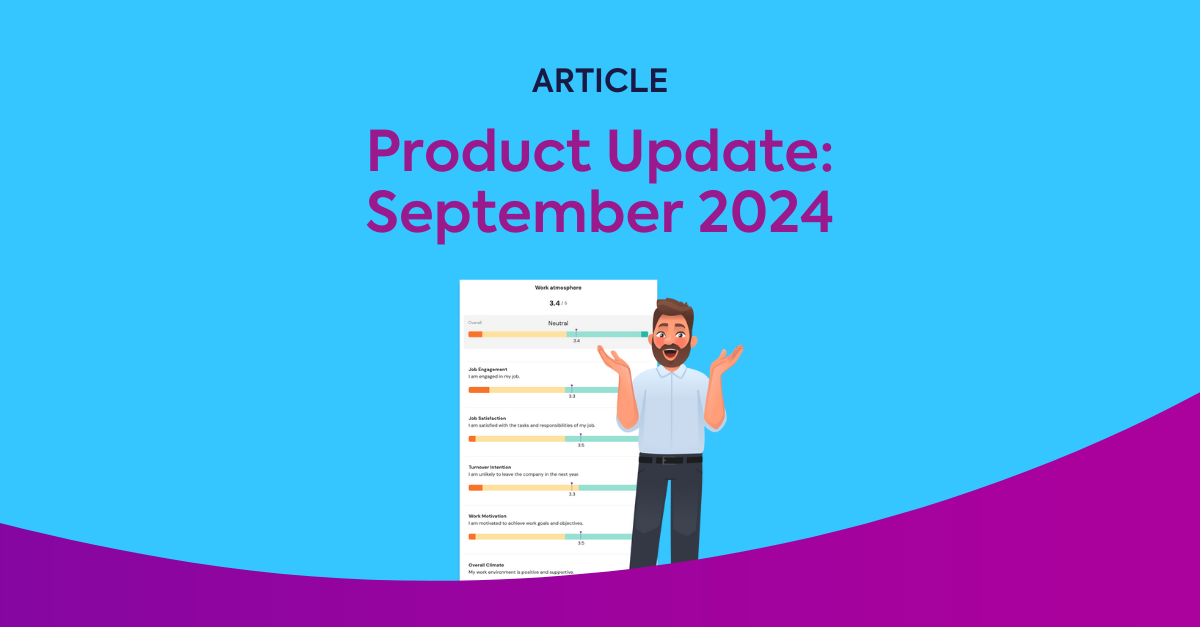The Compono Culture, Engagement & Performance Model
Organisational culture and employee engagement don’t just shape your business; they define its success. Imagine a workplace where employees feel...
Become the expert on delivering
valid and fair assessments for
your training and education.
Hire
|
Engage
|
Develop
|
|
Automatically match to candidates who are a great fit for your team culture and who are intrinsically motivated to succeed. |
Deeply understand your organisation with science-backed analytics on your culture, team design, and engagement. |
Back your onboarding, compliance and skill development with industry-leading credentialling, competency and capability expertise.
|
Hey Compono helps you understand your personality and how to turn it into your superpower.
First 1,000 users get 10 minutes free.
Just $15 a month after that — cancel anytime.
4 min read
 Mathan Allington
May 28, 2025 12:01:40 PM
Mathan Allington
May 28, 2025 12:01:40 PM

Employee engagement is much more than a buzzword or a trending topic in HR circles. It’s the secret sauce behind thriving workplaces, motivated teams, and positive business outcomes. Yet, achieving truly engaged employees takes more than an occasional workplace pizza party or an annual engagement survey. It requires strategic, ongoing efforts that focus on aligning organisational goals with employee needs.
But why is employee engagement important? For starters, engaged employees produce higher levels of discretionary effort. They’re more likely to stay with a company, remain motivated, and contribute to key performance indicators like customer satisfaction and overall business success. On the flip side, disengaged employees can drag down morale, affect productivity, and increase turnover costs.
While there’s no one-size-fits-all solution, implementing a strategic employee engagement framework can transform both your workplace culture and your business outcomes. Below, we’ll break down some of the key approaches to improving engagement, explore models like the Job Demands-Resources (JD-R) model and the Gallup employee engagement model, and introduce tools like Compono’s solutions to help you develop an effective employee engagement strategy.
At its core, employee engagement is about more than just job satisfaction. High engagement reflects a strong emotional commitment to one’s work, the organisation, and its goals. When employees feel aligned with their organisation, they’re willing to go the extra mile because they see their individual contributions as meaningful.
Key drivers behind employee engagement include meaningful work, professional growth opportunities, workplace relationships, and a positive work environment. These factors not only improve the employee experience but also support organisational success by enhancing productivity and retention.
However, disengaged employees often lack this sense of connection, which can impact both their team engagement and overall performance. Tackling these challenges head-on requires a holistic approach, which is where structured engagement models and tools come into play.
The Gallup employee engagement model focuses on measuring engagement levels through surveys. With questions designed to gather meaningful employee feedback, this model provides organisations with the data they need to identify problem areas and take actionable steps. For example, pinpointing low engagement within specific teams or roles can help leaders implement targeted solutions, such as better performance management or increased job resources.
By using tools like an annual engagement survey, organisations can track progress over time and adjust their strategies accordingly. Compono’s employee engagement software, for instance, simplifies collecting and analysing survey data, ensuring your efforts are both efficient and effective.
Another popular framework is the JD-R model, which examines the balance between job demands and job resources. Job demands refer to the elements of work that require sustained effort, whether physical, emotional, or psychological. When these demands outweigh the available resources, employees can become overburdened and less engaged.
Conversely, when organisations provide sufficient job resources—including support systems, training opportunities, and recognition programs—it drives employee engagement. The JD-R model highlights the importance of maintaining this balance to foster job satisfaction, employee wellbeing, and higher engagement outcomes.
Taking things a step further, the Compono Culture Engagement and Performance Model offers a comprehensive and dynamic approach to improving employee engagement. Unlike standalone models, it connects three critical components within the workplace landscape: organisational culture, employee engagement, and performance outcomes.
At the heart of this model is the idea that engagement shouldn’t exist in isolation. Instead, it’s most effective when tightly aligned with company culture. This alignment ensures that when engagement is high, employees adopt behaviours that support overarching business goals. It’s an elegant looped process where culture informs engagement, and engagement fuels performance.
For organisations aiming to align their culture and boost engagement outcomes, this Compono model serves as a compelling framework. It emphasises that a thriving workplace begins with a proactive approach to embedding cultural alignment across the employee lifecycle, from recruitment to retention.
Using the insights from Compono’s tools, HR teams can craft their own employee engagement model, fully customised to their organisation’s unique culture and priorities. This might include adjusting recruitment strategies to attract candidates aligned with the company's values and providing ongoing support to maintain engagement over time.
Developing an employee engagement strategy isn’t just about having the right frameworks; it’s about taking action. Here’s how to turn those theories into measurable engagement efforts:
Measuring employee engagement is just as important as improving it. By tracking the right engagement outcomes and using employee engagement software, HR teams can identify areas for improvement and ensure their strategies are on track.
Key performance indicators might include employee retention rates, team engagement levels, and job satisfaction metrics. Additionally, a focus on customer satisfaction can shed light on how engaged employees impact external relationships and business outcomes.
With an employee engagement platform like Compono’s, organisations unlock the ability to monitor these metrics seamlessly. Whether you’re tracking engagement progress through surveys or monitoring trends in employee experience, having the right technology in place makes all the difference.
At the end of the day, a highly engaged workforce isn’t just about happier employees (though that’s definitely a big win). Engaged employees produce tangible business results, from improved productivity to increased customer satisfaction. They’re less likely to leave their roles, which reduces turnover costs, and they’re more willing to go the extra mile to meet organisational goals.
On the other hand, actively disengaged employees can harm business outcomes. Their lack of motivation, connection, and discretionary effort often requires the team to pick up the slack, lowering overall morale.
This is why employee engagement measures are so critical. When organisations invest in a strategic, personalised engagement model, they unlock the kind of organisational success that makes people want to stick around. And isn’t that what every thriving workplace is aiming for?

Talk to an expert and find out how Compono can help you get the competitive edge with culture, engagement and performance.

Organisational culture and employee engagement don’t just shape your business; they define its success. Imagine a workplace where employees feel...

Follow our monthly product updates as we share the latest features to help you strategically design and develop teams and the work environment.

Starting and scaling a business is tough enough without the chaos that comes with hiring the wrong people or struggling to keep them motivated....